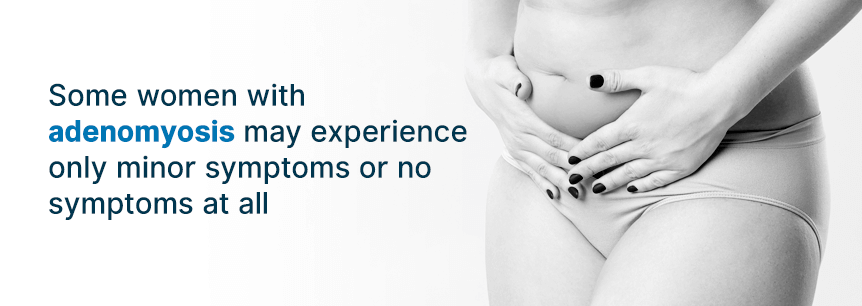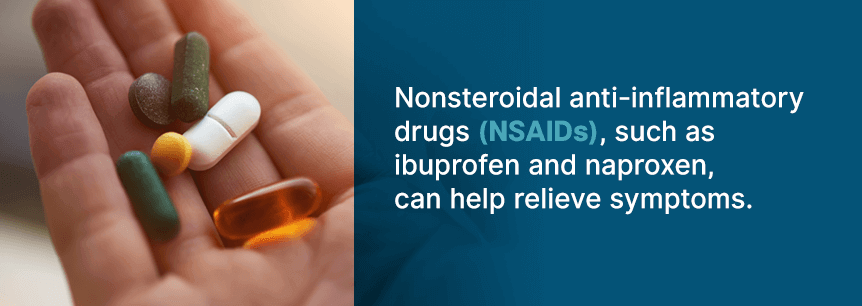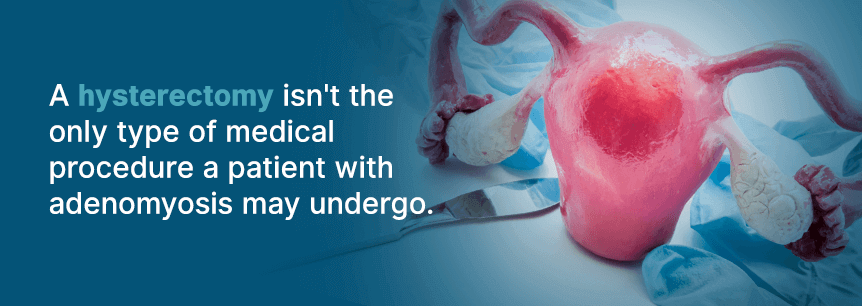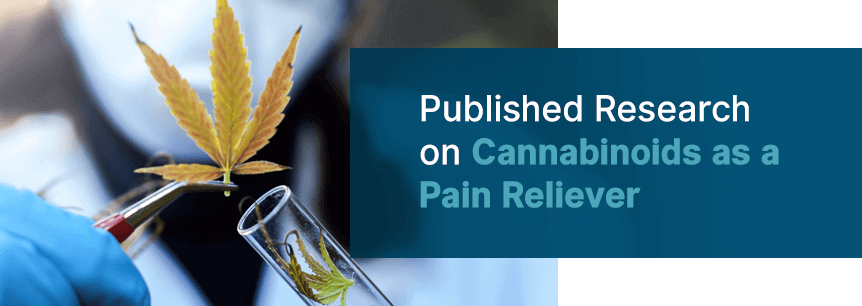Adenomyosis is an unfamiliar term to many, but it is a fairly common condition in women. This condition affects the inner lining of the uterus and can cause painful symptoms. Many women with adenomyosis also experience depression. Where conventional forms of managing symptoms fall short, marijuana is an excellent alternative form of treatment. Research has demonstrated marijuana’s impressive potential as a natural and effective treatment option.
Adenomyosis is a condition that affects a woman’s uterus. The endometrial tissue that would usually line the inside of the uterus grows through the muscular wall of the uterus, known as the myometrium. This may occur through the whole uterus or only in one section. Though the tissue is displaced, it continues to thicken, break down and be shed each month as part of the menstrual cycle. The uterus may be enlarged as a result of the condition.
As with similar problems, such as endometriosis, the cause of adenomyosis is unknown. Most women will no longer suffer from adenomyosis once they have gone through menopause. The only real cure before menopause is to remove the uterus through a procedure called a hysterectomy.
Adenomyosis was first described in 1860 by a German pathologist named Carl von Rokitansky. At the time, Rokitansky called it “adenomyoma.” The first description that matched what we today know as adenomyosis came from Thomas Stephen Cullen at the turn of the nineteenth century. In 1925, Frankl gave an accurate description of adenomyosis and called it “adenomyosis uteri.”
Our current definition finally came in 1972 from Bird, who described the condition as an invasion of the endometrial tissue into the myometrium, causing the uterus to enlarge. The tissue isn’t an abnormal growth but does occur in an abnormal place. Additionally, the uterus becomes enlarged due to both the enlargement of its component cells and due to an increase in the number of cells. Over decades and even centuries of research, not much has come to light regarding causes of or cures for adenomyosis.
Some women with adenomyosis may experience only minor symptoms or no symptoms at all, while other women may experience severe symptoms that interfere with their daily lives.

Though the degree of severity differs from case to case, the symptoms of adenomyosis usually include:
In addition to these primary symptoms, research also reveals a correlation between adenomyosis and depression.
It is difficult to know exactly how many women suffer from adenomyosis since many cases go undetected until a hysterectomy is performed and brings the issue to light. Some women may experience symptoms that suggest they may suffer from adenomyosis or a similar disorder, such as endometriosis. In women who have had hysterectomies, between 15 and 57 percent of women with leiomyomas, also known as fibroids, also had adenomyosis.
Women who have adenomyosis can seek relief through a few different means. These treatment options include medications, home remedies, hysterectomy, and other procedures. Let’s take a closer look at each of these methods of treatment:
Nonsteroidal anti-inflammatory drugs (NSAIDs), such as ibuprofen and naproxen, can help relieve symptoms. Taking such medication before and during a menstrual period can help relieve pain from menstrual cramps and can even reduce a woman’s menstrual flow. One thing to watch out for if you are taking high doses of NSAIDs is that they could cause damage to your stomach lining.

Combination birth control, which includes estrogen and progestin, can also help lessen uncomfortable symptoms that accompany menstrual periods, including pain and heavy bleeding. Women who are on birth control pills that consist only of progestin or on continuous-use birth control pills often no longer have their periods, which can also offer relief. Some women prefer not to seek relief from symptoms through hormonal birth control, however, since it can cause unpleasant side effects, including:
Some women find relief from menstrual pain in simple home remedies, including:
In severe cases, a doctor may recommend a hysterectomy, a surgery to remove the uterus. According to the Center for Disease Control, a hysterectomy is the second most common major surgical procedure that reproductive-aged women in the U.S. undergo. There is no need to remove the ovaries, as they are unaffected by adenomyosis.
The traditional way to perform a hysterectomy is through an invasive surgery where a large incision is made in the abdomen. This surgery usually results in a three- to five-week recovery process where the patient will likely experience a great deal of pain. A hysterectomy can also be performed vaginally or laparoscopically. Both of these options are far less invasive than a traditional procedure but still involve two to three weeks of recovery.
A hysterectomy isn’t the only type of medical procedure a patient with adenomyosis may undergo.

Other less invasive or noninvasive procedures include:
These procedures have been shown to have minimal degrees of success in treating adenomyosis.
For women dealing with pain and discomfort brought on by adenomyosis, medical marijuana can be an excellent alternative for managing their symptoms. For centuries, cannabis has been prized for its ability to provide pain relief. People from centuries or even just decades ago may not have understood why marijuana helped relieve their pain, but today, scientists are beginning to understand why.
The reason cannabis affects a person’s body is that it interacts with their endocannabinoid system. Many people are familiar with systems like the digestive system, endocrine system, nervous system and more, but may be less familiar with the endocannabinoid system. However, that doesn’t make this bodily system any less vital. The endocannabinoid system plays an essential role in keeping our bodies well-regulated and in a state of homeostasis.
The endocannabinoid system consists of three components:
Endocannabinoids are often described as keys that unlock the receptors to have an effect. Cannabinoids are the equivalent to your body’s natural endocannabinoids. Cannabis contains a multitude of cannabinoids, the most notable of which are tetrahydrocannabinol (THC) and cannabidiol (CBD). These cannabinoids bond to the receptors CB1 and CB2. Whether internal endocannabinoids or plant-based cannabinoids, they bond with the receptors and are broken down by the enzymes in your endocannabinoid system. This system is actually named after the cannabis plant since the system itself was discovered because of the way marijuana interacted with it.

Clinical research involving the use of marijuana for medicinal purposes has been limited because of the legal constraints and social stigma associated with it. Even though research is somewhat limited overall, marijuana’s ability to relieve pain has been confirmed by a rather substantial body of research.
Because of the wealth of research on this topic, several researchers have set out to review the literature. One review looked at recent clinical trials involving cannabinoids to treat pain and concluded that cannabinoid analgesics have been well tolerated in clinical trials and show great promise as a means to treat pain.
In 2010, another review looked at the history of using cannabis medicinally and at current preclinical and clinical studies that dealt with the topic of using cannabinoids as potential analgesic agents. The researchers acknowledge the potential of cannabinoids to treat severe pain, in particular, and point out that it is the only analgesic capable of doing so. Currently, opioids are the only mainstream means of treating severe pain, so cannabinoids could be a much-needed alternative to these strong and extremely addictive drugs.
In a more recent review from 2017, the authors take a skeptical approach and call for more research to be done. However, they acknowledge that many randomized, controlled clinical trials have demonstrated that cannabis can be an effective pharmacotherapy for pain.
Pain and inflammation are closely connected, and research has shown that, here too, marijuana can help. A 2010 study clearly demonstrated the ability of cannabinoids to reduce inflammation.
In addition to relieving pain and inflammation, marijuana is known to have a positive effect on mood, making it a helpful means of combatting mild cases of depression or mood swings. Many people have experienced these positive effects firsthand.
As with any medical treatment, it’s important to be aware of the potential side effects you could experience. Fortunately, in the case of marijuana, these side effects are relatively few. It helps to make sure you and your doctor work together to determine the best dosage and strain of marijuana to use. Possible side effects of cannabis include:
Marijuana comes in different strains that affect your body differently. Strains that are higher in THC will usually have a stronger psychoactive effect on your brain, while those that are higher in CBD and lower in THC won’t affect your sensory perception as much. Stains that are high in both THC and CBD tend to make the most powerful analgesics. Also keep in mind that some strains will energize you, while others will relax you.
Not everyone will respond to a cannabis strain in the same way, so there may be some trial and error involved in finding the strain that perfectly meets your needs. If you don’t find it right away, keep looking. Here are some strains that are known as powerful painkillers and mood lifters — perfect for anyone suffering from adenomyosis:
There are many ways to administer marijuana, including:
If you have adenomyosis that causes you pain and discomfort, consider trying medical marijuana. Marijuana can help relieve pain and inflammation as well as help with feelings of depression. If you’re interested in seeing if medical marijuana may be the right treatment for you, start by looking for a medical marijuana doctor or a dispensary in your area. The doctors we recommend are all licensed and have the expertise to help you along your journey of becoming a medical marijuana patient.

Medical marijuana for adenomyosis is an option you should strongly consider. It can relieve your symptoms and deliver all sorts of medicinal benefits that leave you feeling renewed and refreshed — the natural way.
Find A Doctor Find A Dispensary